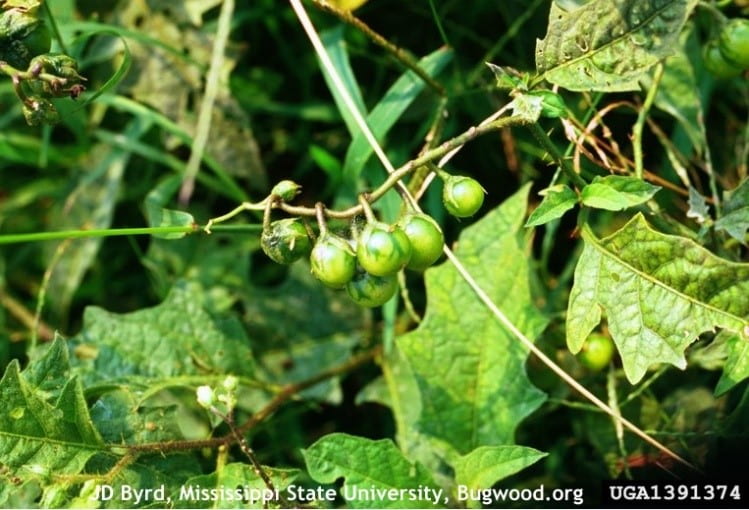Gordon Johnson, Extension Vegetable & Fruit Specialist; gcjohn@udel.edu
Contaminants are a major concern for vegetable processors and packers. Consequently, quality control/food safety programs have been developed by vegetable companies to reduce the risk of tainted products.
One major concern in processed vegetables is foreign materials such as glass, metal, plastic, and stones. A high risk area for foreign material in processing vegetable fields is next to roadsides where bottles, cans and other litter is often found.
Managing to reduce foreign material contamination requires inspecting fields prior to harvest and hand removal of these materials. In processing plants, magnets can be used to remove metals; gravity and flotation based systems can remove heavier materials such as glass and stones, color sorters also can remove some of these materials, and having crews hand remove contaminants over a grading belt is another option.
Insect contaminants are a second area of concern. In particular, those insects that “bore” into or lay eggs inside of fruits, seeds, leaf whorls, or stems, and cannot be removed in washing and sorting operations, are problematic. A major issue is consumers finding “worms” in processed vegetable products or fresh produce. Snap beans, edamame vegetable soybean, pickles, sweet corn, and spinach are examples of crops where there is a zero or low tolerance for insects in harvested products for processing.
Managing to reduce or eliminate insect contamination starts with strict control programs in the growing field. Insect damaged fruits and seeds may be removed by hand or by mechanical means during grading. However, insects found in fruit or seed interiors may be difficult to remove by these methods.
Weed seeds and fruits are a third area of concern, especially for processors. The most problematic are those weeds that produce a seed or fruit similar in size and color to the harvested product. A good example is horsenettle. It produces a fruit similar in size and shape to lima bean seeds which end up being harvested along with the lima beans in field operations.
Horsenettle fruits are a lima bean processing crop contaminant because they are a similar color and shape as baby limas.
Managing to reduce or eliminate weed contamination of vegetable products starts with good weed control in the field. If a field has a history with a problem weed then efforts should be made to eliminate that weed in rotational crops. If there are small areas of escaped weed contaminants in a field then they can be removed by hand. Post-emergence applications of herbicides timed properly can reduce flowering and weed seed and fruit formation in some cases. Avoiding harvest in infested areas is another practice to reduce contamination by weeds.
Contamination from disease causing organisms is another area of concern in processed vegetables and fresh packed produce. Infected produce may be discolored, may have off-tastes, or may generate bad odors. Infected produce many also break down or rot in transit. One major problem in recent years has been Phytophthora capsici causing breakdown of watermelons and cantaloupes during shipping. It is a major concern in pickles causing breakdown of pickle fruits between washing operations and delivery to the processing plant. In lima beans, harvest of Phytophthora infected pods has tainted whole runs of lima beans during processing with foul odors rendering a significant number of frozen lots unsaleable.
Phytophthora capsici infected watermelon fruit can cause “melting” in the bin during staging and transit.
It also can taint products such as frozen lima beans with a foul odor reducing salability.
Control programs should be targeted on problem diseases to reduce contamination. In particular, fields with a history of Phytophthora capsici should be avoided if possible. Chemical control programs should be used as a preventative when suspect fields are planted to susceptible vegetables such as lima beans, cucumbers, or watermelons. Because this is a soil-borne organism with a long-term resting spore that infects during wet periods, all efforts should be made to improve drainage in fields. Avoid harvest in field areas with infections.
Processors and packers are also concerned with off-label applications of pesticides, and therefore keep detailed records of herbicide, insecticide, fungicide, and other chemical usage. One major issue has been days to harvest with herbicide applications. Quick growing vegetables may be ready for harvest ahead of the label restrictions. Rotational restrictions with herbicides also limit field options for many vegetables.
Lastly, microbial contamination with food-borne illness causing organisms such as E. coli and Salmonella is a major concern in high risk vegetables that are consumed fresh such as lettuce and other leafy greens, tomatoes, and netted muskmelons. All produce growers should have a food safety plan and implement practices to reduce potential contamination with food borne human pathogens.


